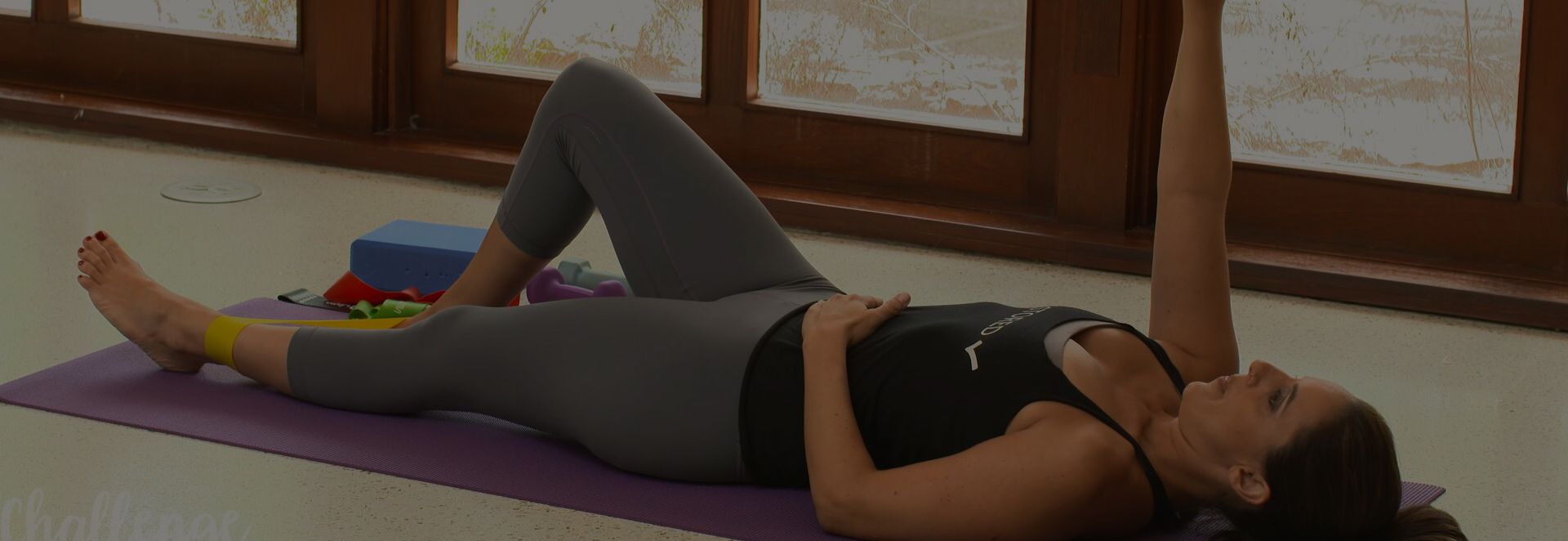Rectocele Symptoms : The Signs of Rectocele Dysfunction
4 Min Read
A woman’s vagina is separated from her rectum by ligaments and tissues known as the rectovaginal septum. The tissues that line this wall are called fascia. At times, due to compromised pelvic health or pelvic injuries, a woman may experience a weakness of the vaginal wall and rectovaginal septum. When this occurs, a part of the rectum can bulge and protrude into the vagina. This is called a rectocele prolapse.
Table of Contents
What is Rectocele?
Rectocele is a condition which causes the supportive tissues between the rectum and the vagina to weaken. This can occur due to excess pressure in the rectum, excess vaginal pressure, or excess intra-abdominal pressure leading to pelvic floor issues such as pelvic organ prolapse (POP). When this occurs, the separating tissues can herniate causing the front wall of the rectum to bulge into the vagina. This issue is also commonly called a posterior vaginal prolapse. Oftentimes, the prolapse is small and does not pose any painful symptoms or difficulties. However, in severe cases, the bulge may manifest outside of the vaginal opening and require surgical repair.
Signs and Symptoms of Rectocele
In many cases, someone may have a rectocele for a long period of time without noticing any symptoms.
In minor to moderate cases of symptomatic rectocele, someone may experience feelings of mild discomfort, pressure, or minor pain in the vaginal or rectal regions. This may be accompanied by a feeling of incompletion after bowel movements.
In moderate to severe cases, women with a rectocele may have an increased sensation of pain and discomfort in their vagina, rectum, or abdomen while pooping. This can be a result of the feces being pushed into the rectocele during a bowel movement. Women with moderate rectocele run a higher risk of constipation, painful intercourse, and lower abdominal and lower back pain. In severe cases, the rectocele can prolapse causing the tissue to protrude out of the vaginal opening.
Other symptoms of rectocele may include:
- A small bulge in the wall of the vagina
- Needing assistance of fingers to perform a bowel movement
- Pressure in rectum
- A feeling like an “air bubble” in the vagina
- Pain, discomfort, or feelings of looseness during vaginal intercourse
- Other pelvic organ prolapse issues such as vaginal prolapse, uterine prolapse, rectal prolapse, or other issues with the pelvic floor.
Rectocele is a common condition many women may face without ever knowing it. Most often it is associated with postpartum issues, but it can affect women who have never been pregnant as well.
If you are experiencing severe issues such as: tissue bulging through your vaginal opening or constant struggles with constipation, it may be time to consult your doctor for a proper diagnosis. Generally a Urogyn is the best bet for diagnosis.
What Causes Rectocele?
There are many reasons why someone may have pelvic floor related issues. Most commonly the weakening of the pelvic region, the vaginal and rectal tissues, and core strength relate to pregnancy and difficulties in vaginal childbirth – especially birthing multiple children. Women who required equipment assistance during their delivery (suction, forceps, etc) may run a higher risk of developing a rectocele than women who did not. Large babies and longer labor periods can also contribute to weakened pelvic floor muscles.
Some other possible causes for rectocele include:
- Recurrent, chronic constipation
- Chronic cough
- Improper heavy lifting techniques
- Obesity
- Menopause
- Age
Women going through menopause go through a host of changes and significant hormonal shifts that can affect the pelvic floor muscles. Aging can also affect durability and strength of muscles over time, especially in the pelvic region. Excess pressure in the abdomen like constant abdominal tension, excess abdominal tone, poor core strategy, poor exercise strategy can also contribute to pelvic floor weakness.
What happens if Rectocele Goes Untreated?
Rectocele is usually not a very serious condition and may go unnoticed for years. However, if someone is experiencing symptomatic rectocele and leaves it untreated, they might suffer a host of painful symptoms. A few risk factors of untreated, symptomatic rectocele include: chronic constipation, vaginal bleeding unassociated with menstrual cycles, prolapse the rectal wall into the back wall of the vagina, and rectocele repair surgery. It is important to consult your doctor if you are experiencing any of the symptoms listed above.
Can a Rectocele Go Away on its Own?
Unfortunately, it is ot thought that a rectocele will heal on its own. Although it can go asymptomatic for years, it will still remain there unless treated in some way. If ignored, a rectocele can become larger and present more problems over time. During a regular health exam, your doctor may notice the presence of a rectocele. If so, there are many ways you can pursue treatment without the need of surgery.
How do you Fix a Rectocele?
Fixing a rectocele can be done in many ways.
Diet & Exercise
Non-surgical treatment depends entirely on the severity of your rectocele. In most cases, rectocele can be treated through:
Exercise: Your doctor will most likely recommend performing daily exercise routines or pelvic floor therapy in order to strengthen and heal your pelvic floor. Exercises for POP are designed to heal many forms of pelvic organ prolapse and can greatly aid in your rectocele treatment.
Dieting: Dieting can also significantly help with any digestive issues that might be contributing to your rectocele. A high fiber diet and ensuring you are consistently well hydrated can help reduce your risk of constipation and straining during bowel movements.
Vaginal Pessary: Your doctor may recommend a vaginal pessary to help support the bulging tissues in your vagina. A pessary is a small rubber or plastic ring used for vaginal health.
Surgery
At times, exercise based treatment is not enough to treat rectocele. Surgical repair may be considered if you are experiencing: a prolapse which protrudes outside of your vagina, or additional pelvic floor issues that may be increasing the painful symptoms. In this case, rectocele repair surgery might be advised and any co-occurring issues can be repaired at once. In many cases, it is a minimally invasive surgery that removes any excess tissue along the bulge and stitches the area up for support.




